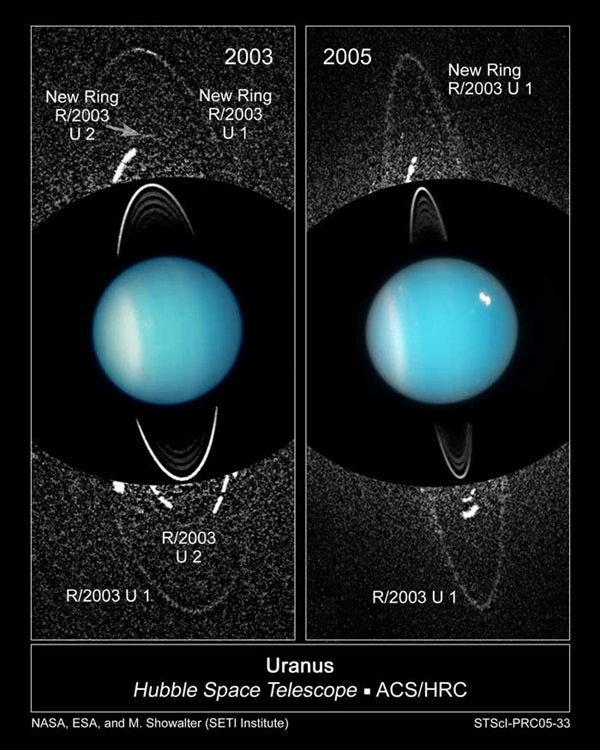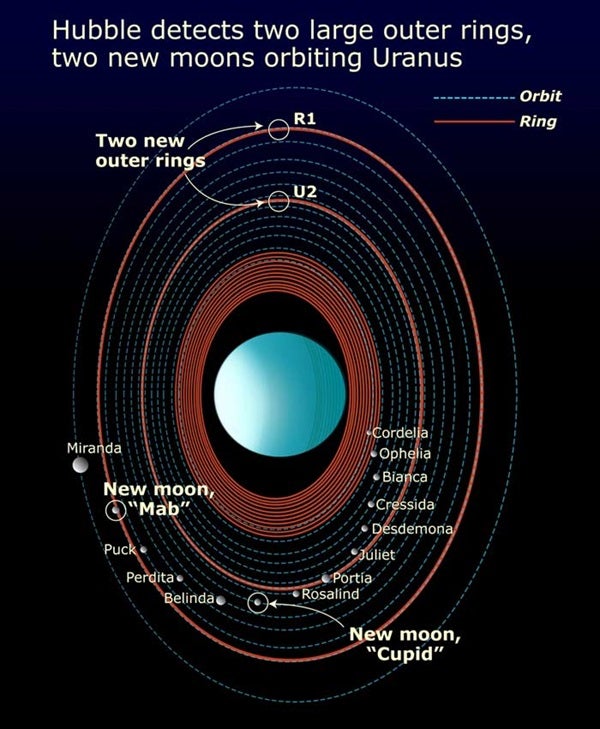Saturn isn’t the only planet to harbor a complex ring structure. In 1986, NASA’s Voyager 2 spacecraft sent back images of a family of 10 moons and a system of rings orbiting Uranus. New images from the Hubble Space Telescope (HST) increase those numbers.
Newly discovered moon Cupid orbits in the midst of a swarm of inner moons known as the Portia group, so named after the group’s largest moon. The Portia group lies just outside Uranus’ inner ring system and inside the planet’s larger, classical moon group of Belinda, Perdita, Puck, and Miranda. Mab, the smaller of the two newly detected moons, orbits outside the inner moon group and Cupid, but interior to Uranus’ four outer moons.
A second ring system was also detected around Uranus and imaged by Hubble. Rings R/2003 U 1 and R/2003 U 2 (R1 and R2, respectively) both lie outside the orbit of the inner ring system. Researchers believe micron-size dust is a main constituent of these rings.
Showalter believes Uranus’ ring-moon system is unstable and exhibits chaotic evolution. Since the last observations were made, Uranus’ moons changed orbit. This has long-term implications for Uranus’ ring-moon system. “Long-term changes to the system include collisions and crossing ring systems,” adds Lissauer.
One thing is for sure, says Lissauer — “Our solar system is a dynamic place.”











